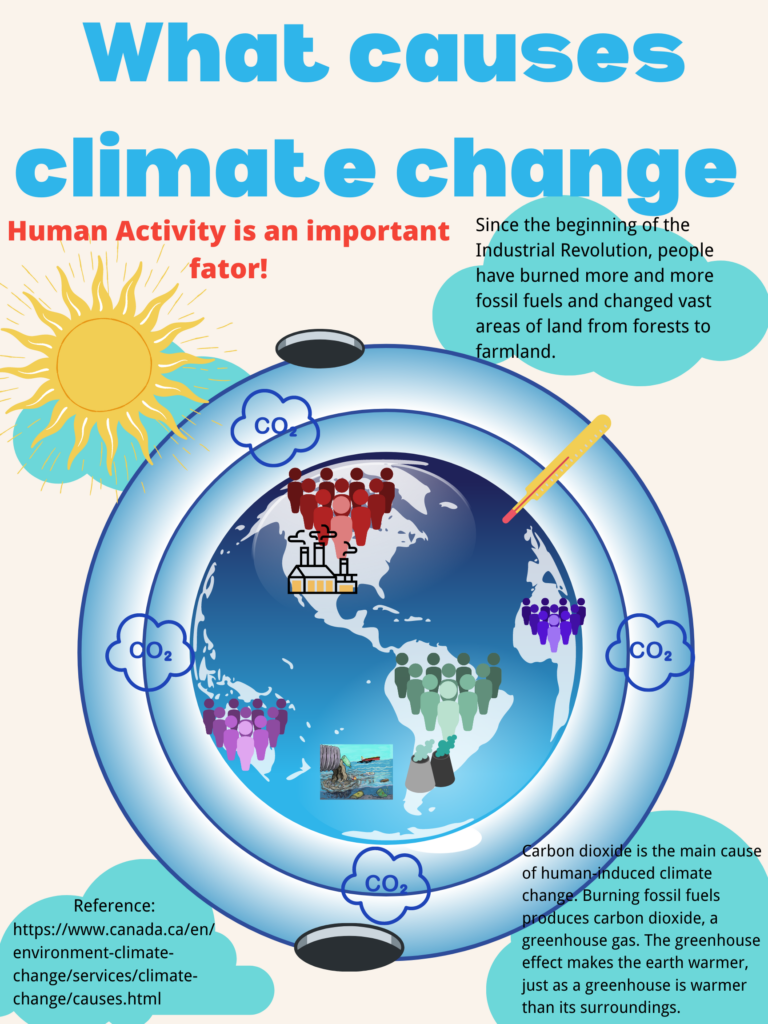Global Warming Lesson Plan
The main purpose of the lesson
The lesson focuses on:
- The causes of global warming, the greenhouse effect, and the major greenhouse gases. Students will be able to report on and express their opinions on the following points by the end of this lesson:
- the factors that contribute to global warming;
- global warming’s consequences;
- technology aimed towards lowering greenhouse gas emissions.
- Reduced greenhouse gas emissions technology. Students will be able to report on and express their opinions on certain technologies for reducing greenhouse gas emissions by the end of the class.
Learning outcomes
Content- definitions and concepts of:
- Greenhouse effect
- Greenhouse gases (the largest sources of greenhouse gas emissions)
- Climate changes
- Ice sheet melting
- Technologies to reduce greenhouse gas emissions
- Renewable energy
- Solar/wind energy
- Energy efficiency
Cognitional outcomes:
- Students will be able to take a stand on global warming and support their perspectives with facts, arguments, and examples.
- Students will be able to speculate about global warming’s causes and consequences, as well as effective mitigation solutions.
Communication- students will be able to:
- Participate in class discussions and group brainstorming sessions about global warming and mitigation strategies;
- Write and speak about their views on global warming as well as mitigation measures for global warming.
Culture- students will be able to understand the reasons why:
- Global warming is an issue that affects all countries in the world;
- the effects of global warming are more severe in some countries than in others;
- some countries have yet to contribute to an effective battle against global warming.
Part 1: Videos and readings (Materials used)
Readings about global warming:
https://climatekids.nasa.gov/climate-change-meaning/
https://climate.nasa.gov/climate_resources/25/interactive-climate-time-machine/
Fun games about global warming:
https://climatekids.nasa.gov/menu/play/
Videos about global warming:
Part 2: In-class active learning
Powerpoint slides by Yinghao Lu: https://docs.google.com/presentation/d/1H_SFAfwK696684gTmA8RvWFTpacZ0f2NXTVnPYBEaIs/edit?usp=sharing
Infographic by Jun Yang:


Video by Barbara Wang:
Part 3: Activities and quiz
Students will be able to:
• participate in group brainstorming sessions and class discussions related to global warming.
• express their viewpoint on global warming both in writing and speech.
Activity by YL: https://docs.google.com/document/d/1Qxt7jKKnL0VQwUeX_1C-8cVqx9R6-jUx6zmmSVQDShg/edit?usp=sharing
Quiz by YL:
https://create.kahoot.it/details/15cf3ff8-d482-4c29-b4e1-4bce251e2fe5
Part 4: Check for Understanding
- How are glaciers indicators of climate change?
- List some of how human activities are contributing to global warming.
- If global warming continues into the coming centuries, what are some consequences predicted by models?
The multimedia learning-related theories that have been used in designing our lesson:
We used the SAMR model for our lesson plan.
Substitution in our lesson plan:
We will use different technology tools in class, google document, google slides, online polls(online quiz). We will also show global warming-related videos via YouTube for students.
Augmentation:
We will encourage students to do the online research by themselves instead of just giving handouts to them, students will get a chance to visit the websites and search for information about different representations of global warming. We will use different technology tools in our plan so that the students can receive immediate feedback and enhance the learning environment (we created a quiz via Kahoot so that students can submit their answers online and get automatically marked immediately).
Modification:
We will share all the information via google document and students can directly go there and express their ideas, and we will ask students to create a podcast and share their work with a group of audiences.
Redefinition:
Students were expected to contact outside sources for information. I think our lesson plan is excellent for student-centered learning.
Multimedia learning principles and related theories we used:
For the powerpoint slides, we referred to the notes from EDCI337 Week 4, also known as Multimedia Design Principles. We adjusted both the content and visual aspects, for example, we unified the color palette of a project as much as possible to make the images look harmonious, and beautiful. The inclusion of theme-related images and video clips made the project look less boring. In the slides, we emphasized key points based on cognitive load theory and signaling principles, and kept each slide to one idea and no more than six objects. According to the redundancy principle, the slides were not overloaded with text to ensure that the audience can understand what we want to say in a pleasant and precise way.
In the infographic section, We referred to the note of EDCI337 Week 4 and 7. According to the tips for making a good infographic, we tried to show the causes of climate change through typographic images, using sharp color schemes to attract attention visually, while also paying attention to the amount of information to be carried and the simplicity of the copy. We added a little story about a high school girl protecting the environment because storytelling can activate different parts of the learner’s brain, and make the important points easy to remember. In the infographic,we also put forward some easy-to-practice environmental protection suggestions and call for environmental protection actions.
For the video section, we referred to the notes from week 7, storytelling and videos. There are several principals we can use to make the video better. We used Coherence principle and Contiguity principle to make the video look simple and clear. Video only added a few point words and sentences that related to the learning materials. Based on dual coding theory, Images and words show up together to make the scene look natural.